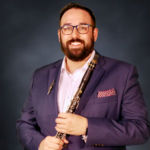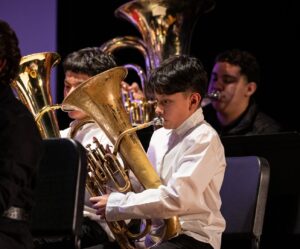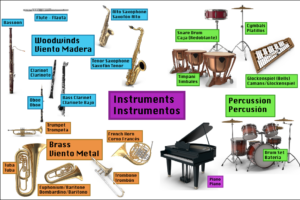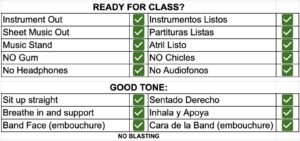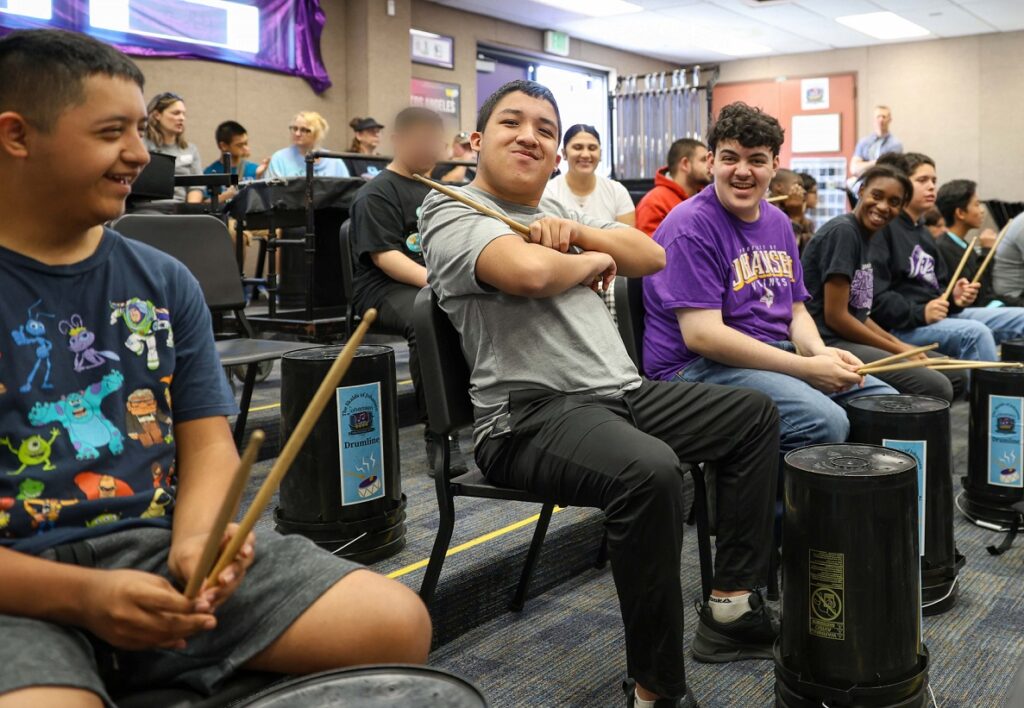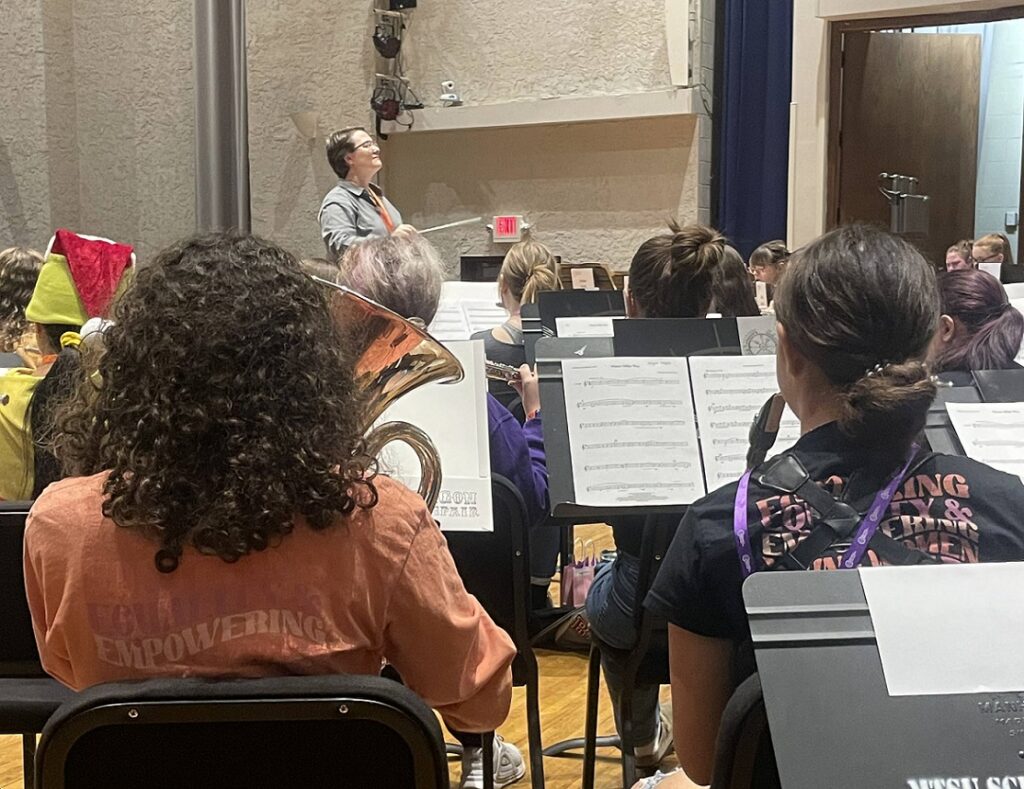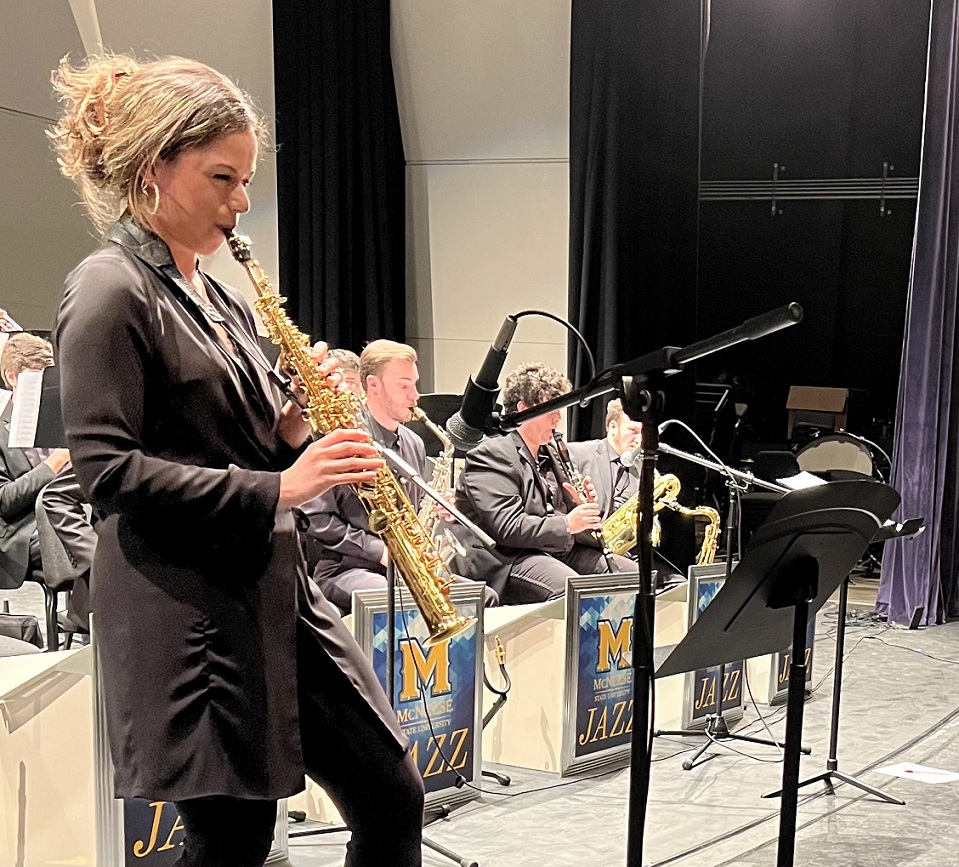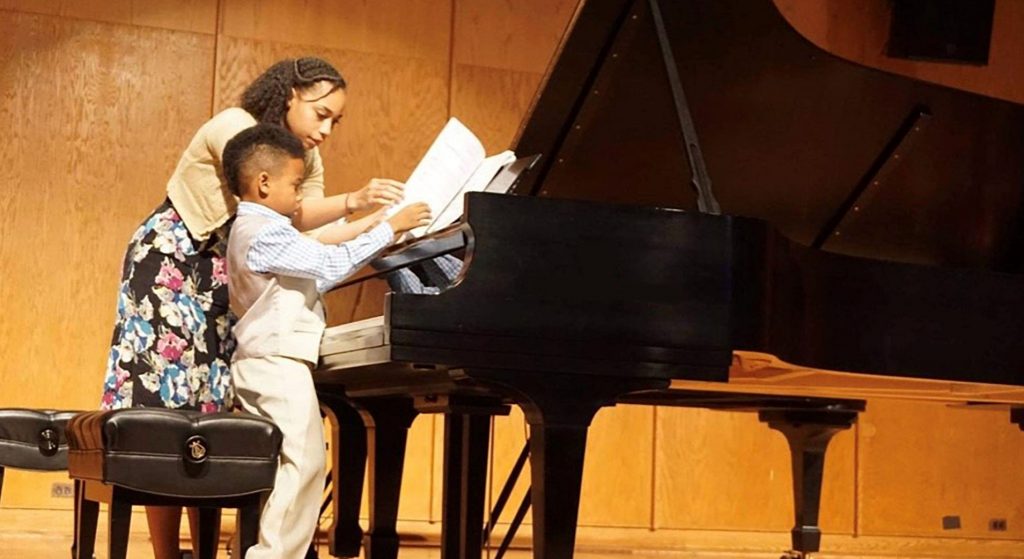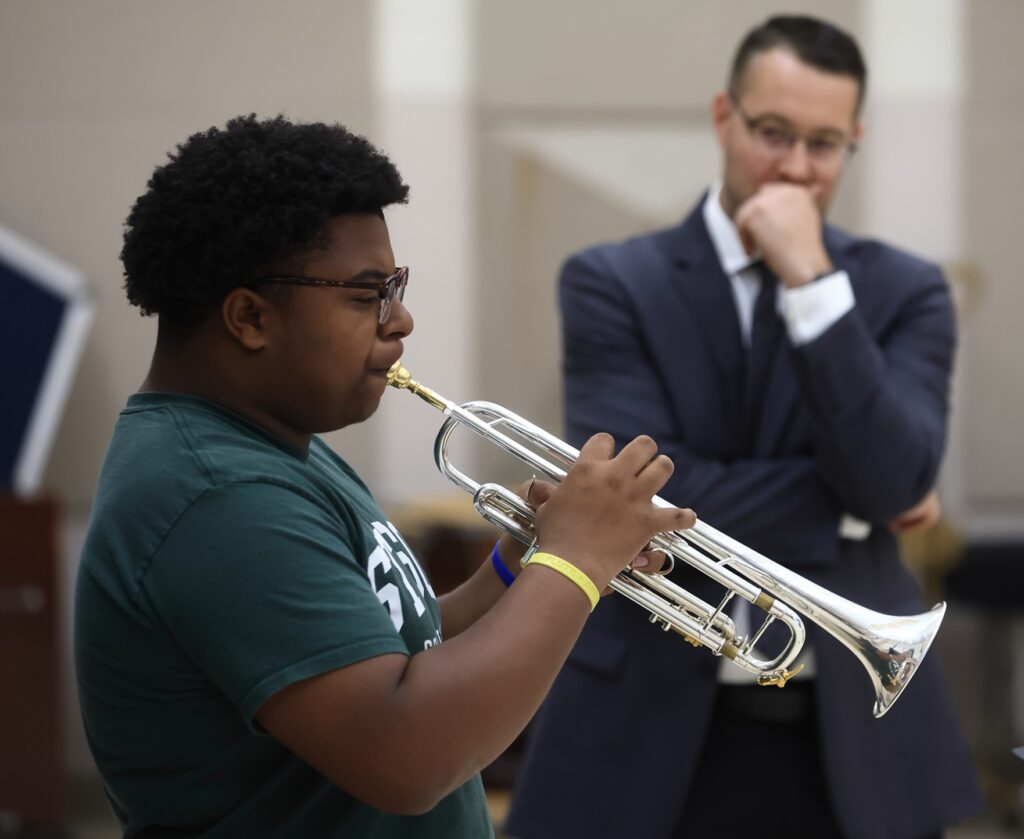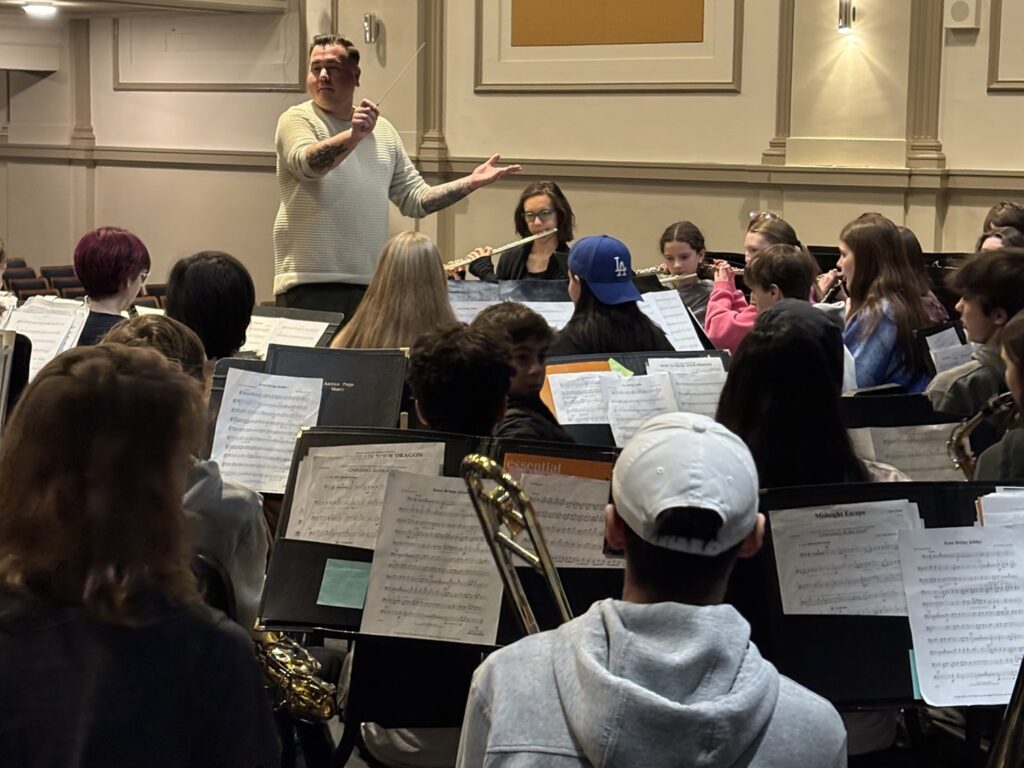Tagged Under:
Support English Learners in Music Classrooms
Incorporate these strategies to support learning and participation by Spanish-speaking English language learners.
English language learners often face challenges in the classroom, particularly in subject areas like music that rely heavily on verbal communication and language comprehension. According to the U.S. Department of Education approximately 77% of English language learners speak Spanish, but nationally there are over 400 different languages spoken by students in schools across America.
I teach at Heritage Middle School in Painesville, Ohio, which has a vibrant Latino community. At our school, 54% of our students self-identify as Hispanic/Latino, and through our state tests, just over 25% of the school population are classified as English language learners. Heritage is a Title I School, so all students receive free breakfasts and lunches. Our school population is drastically different from the predominantly white middle-class neighbors in the rest of our county, which provides unique opportunities and challenges when it comes to our bands. In the music classroom at Heritage Middle School, teachers must be aware of the needs of English language learners and implement strategies to support their learning and participation.
Challenges
English language learners who are immigrants, the children of immigrants or migrants may face a number of challenges that can affect their ability to learn in their new environment. These challenges may include cultural differences, past trauma, limited language proficiency, economic challenges and social isolation. For example, students who are new to the English language may struggle to understand and express themselves in their new environment, which is an obvious barrier to learning. Additionally, immigrant and migrant families may have limited financial resources, which can affect their ability to afford educational materials and resources, and some students help care for younger siblings at home.
A 7th grader who had just moved to Painesville from Mexico wanted to join band but had limited English proficiency and was classified as “beginner” by our English Language Development (ELD) Department. The interesting thing about teaching kids how to read music is that they are all learning this new language. Learning music notation together equalizes students regardless of their language fluency.
Due to the socio-economic demographics of our district, we provide instruments to about 85% to 93% of our students every year. Some students rent or purchase instruments as they become more dedicated, but the vast majority use school-owned instruments. We are fortunate that as our band program has grown, our administration has been able to help increase our inventory so that we do not need to turn away students who want to play. Instrument availability and class size are all variables, and sometimes students do not always get assigned their first instrument choice. Over the past few years, we have successfully earned local grants from our chamber of commerce, local nonprofits and our alumni association.
When planning after-school rehearsals, concerts and other activities, it is important to make allowances for students living in multigenerational homes who may need to miss or come late to events. Many of my students have caretakers who work second shifts, and they need as much advanced notice as possible to arrange for after-school events. Many students struggle with punctuality, especially if they rely on extended family for rides. If they miss the pre-concert warm-up but show up to perform, I happily greet them to make sure they understand that I am happy that they showed up. For our most recent concert in December, I called a few parents to help them arrange a carpool to help get students to the performance. Educators must be aware of these challenges and provide support and accommodations to ensure equity in access to all opportunities offered.
Translating Materials
Title VI of the Civil Rights Act of 1964 guarantees parents and guardians the right to receive information about a child’s education in a language that they can understand, and the 2015 Every Student Succeeds Act (ESSA) also requires states and local education agencies to provide language assistance to parents who are limited English proficient, including the provision of translated materials and interpretation services.
To meet this requirement, many schools and education agencies provide translated materials, such as handouts, school newsletters and other information, in a variety of languages. These materials are typically translated by trained professionals or through the use of translation software. Because we have such a large bilingual population, every building in our district has at least one bilingual secretary in the main office. Each grade level in the middle school also has a translator who assists with translating teachers’ print materials and instructions posted to Google Classroom. When these resources are unavailable, Google Translate or ChatGTP do an excellent job in translating music programs, program notes and letters home. Even with minor grammatical or dialectal errors, the information will be understood.
However, these programs cannot translate music-specific vocabulary like key signature, 4/4 time, whole step, etc. In your instructional planning, your goal should be to teach grade-level appropriate content with supports in your students’ native language(s). For “beginners” and “long-term learners,” I use a reference sheet from the Louisiana Music Educators Association. Use content language that students may know (sometimes their native language helps them learn and understand) and English at the same time. At my middle school band concert I have students help write, translate and read the program notes to introduce each song. This ensures that parents who have limited English proficiency can understand what the songs are about and hear updates about our band program during performances. This demonstrates an interest in English language learners’ native cultures and develops a mutual respect for their home languages and commitment to their growth in class.
Hands-On and Language-Rich Activities
One of the most effective ways to support English language learners in the music classroom is to use visual aids and hands-on activities. For example, using graphic notation, physical gestures and manipulatives can help students understand and internalize musical concepts without relying solely on verbal explanations. My word wall of common music notation vocabulary includes color grouped subcategories and images that help to explain or define the words when possible. In band class, I pair a “novice” or “beginner” ELL with a bilingual student who is confident on their instrument to help translate and model. I play instruments during band classes daily, often switching between clarinet, sax, trumpet or baritone. When language is a barrier to instruction, modeling is often most effective. Luckily, music class is often a hand-on activity where teachers can demonstrate new skills to their students.
It can also be helpful to use bilingual dictionaries and to incorporate authentic materials, such as music from the students’ native countries, into lessons. There are many free resources available online and on website such a Teachers Pay Teachers. Here are some of the ones that I have found helpful in my classroom:
- Word Wall Graphics
- Music Notes and Rest— Notas musicales y silencios
- Opening Statement / Learning Target / I Can Statements
- Spanish and English Music Symbol Poster
Another important consideration is the use of language-rich activities that engage students and help them develop their language skills. This can include movement activities, singing and listening games that involve verbal communication and collaboration. It is also helpful to provide students with the opportunity to work with lyrics in the target language, as this can help them develop their vocabulary and comprehension skills.
All students, not just English language learners, will make language errors. When working to develop fluency, offer guidance and correction in a non-judgmental way without interrupting their flow of speech. This may involve repeating the correct form of the word or phrase, modeling the correct pronunciation in your immediate response to the student. When students are struggling to find the right word or phrase, be patient and give extra processing time instead of immediately offering a suggested word.
In addition to these strategies, be mindful of the language demands of the music curriculum and provide support as needed. This may involve breaking down complex tasks into smaller steps, providing additional language scaffolding or working with an ELD (English Language Development) staff member in your district to modify the curriculum or specific activities and assignments.
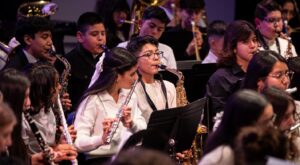
Language Proficiency Levels
Working with an ELD teacher in your district can help you develop strategies that best fit the demographic of your classes. In many ELD Programs, English language learners are assessed by their ELD teacher using local- or state-approved proficiency assessments to determine what level and accommodations are appropriate for the student. While there are many ways to measure English language proficiency in English language learners that vary from state to state, there is a widely accepted model called the Interagency Language Roundtable (ILR) scale. The ILR scale consists of five levels of proficiency:
Novice: At this level, learners have a limited ability to understand and use isolated words and phrases in very familiar contexts.
Intermediate: Learners at this level can understand and use basic phrases and sentences, and can communicate in simple and routine tasks requiring a simple and direct exchange of information.
Advanced: At this level, learners have a general mastery of the language and can communicate effectively in most standard social and professional situations.
Superior: Learners at this level have a full mastery of the language and can use it with a high level of fluency, accuracy and appropriateness in any situation.
Distinguished: This is the highest level of proficiency and is achieved by only a very small percentage of learners. At this level, learners have a native-like command of the language and can use it with complete fluency, accuracy and appropriateness.
In my district, students are classified as “beginners” or “newcomers,” “intermediate,” “advanced” or as ‘long-term learners.” Beginners or newcomers have pre-functional or limited English skills. They are often in self-contained ELD classes and will receive assignments in English and their native language. When possible, they receive help on assignments from a bilingual paraprofessional.
Intermediate and advanced English language learners receive ELA instruction in a co-serve setting with a mainstream ELA teacher and an ELD teacher.
Long-term learners are students who have been learning English for an extended period of time, but they have not yet reached a high level of proficiency in the language. These students may be struggling to make progress in learning English and may be falling behind their peers academically. There are a variety of factors that can contribute to this, including limited opportunities to use and practice the language, lack of support, learning difficulties, and social and emotional challenges. Educators must identify long-term learners in order to provide appropriate support and interventions to help them succeed. Long-term learners may receive specialized ELA/ELD instruction in a small group setting to provide them additional intensive support to improve their reading, writing, speaking and listening proficiencies.
Regardless of how English proficiency levels are defined, they are not necessarily tied to specific grades or age groups, as a student’s proficiency level will change over time as they continue to learn and practice the target language.
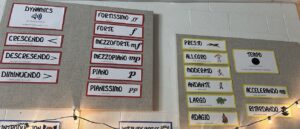
Incorporate Cognates
To further support English language learners in the music classroom, it can be helpful to incorporate cognates — words that sound similar in two languages — into lesson plans and materials. Many Italian musical terms share Latin root words with Spanish, which many of my students already know. For example, tempo can be related to tiempo, which means time. Find little tricks that help to build the connections for your students.
Many western musical instrument names are cognates in many languages as well. Here is certainly not an exhaustive list of English cognates in Spanish but some common musical terms include:
- melody/melodía
- harmony/armonía
- orchestra/orquesta
- composer/compositor
- piano/piano
- music/música
- band/banda
- chord/acorde
- chorus/coro
- concert/concierto
- Director/conductor or conductora, director or directora) * Maestro is usually used to mean teachers of any subject.
- guitar/guitarra
- instrument/instrumento
- percussion/percusión
- symphony/sinfonía
- tempo/tiempo
- violin/violín
- chromatic/chromatico
- note/nota
- trio/trio
- duo (duet)/duo
- echo/eco
Incorporating cognates into lesson materials can help English language learners make connections between their native language and the target language. This can also help to build their vocabulary and content area comprehension.

Create a Welcoming Environment
It is essential to create a welcoming and inclusive classroom environment for English language learners. This includes using positive reinforcement, providing individualized support, and encouraging students to share their cultural backgrounds and experiences through music. Supporting English language learners in the music classroom requires a multifaceted approach that includes the use of visual aids and hands-on activities, language-rich activities and modifications to the curriculum as needed. When programming repertoire for concerts or any songs you use in your classroom, be sure to include materials from your students’ native cultures. According to Geneva Gay’s extensive writings, culturally responsive teaching fosters a sense of community in the classroom, which, in turn, can increase student engagement with the content. By incorporating cognates and visual definitions to reinforce vocabulary, you can effectively support students’ language acquisition while teaching grade-level content and skills.
Educational research has shown that best practices for English language learners are best practices for all. Lev Vygotzgy’s Zone of Proximal Development demonstrates that scaffolding strategies designed for ELL also help struggling native readers. The Center of Applied Special Technology (CAST) developed Universal Design for Learning (UDL) which demonstrates that offering content in “multiple means of representation” benefits all students, not only ELLs. This can be accomplished by incorporating visuals in your word walls, modeling good embouchure or performance techniques, or any other instructional method that provides for a variety of learning types. A 2011 study by Calderón, Slavin and Sánchez showed that explicitly offering vocabulary instruction benefits ELL and native English speakers alike by improving reading comprehension. These may seem like strategies for lessons in an ELA class but students must have the language to describe and interpret the music they are playing in band or any other music class. By implementing these strategies, music teachers can create an environment in which English language learners are able to fully participate and succeed in the music classroom.









